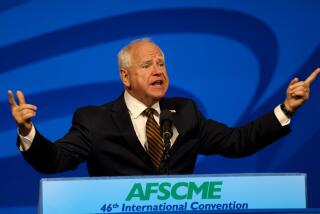High, and at Risk
- Share via
Next weekend’s gay pride festivities in Los Angeles are likely to be the usual rollicking celebration of battles won and hardships overcome. The gay community is rightfully proud of its response to the first decades of the AIDS epidemic. And we have reason to rejoice in ongoing civil rights advances. But, as we celebrate, there is still a vexing problem we need to come to terms with: the centrality of drugs and alcohol to gay culture.
Exhausted from decades of struggle, gays have been reluctant to openly discuss the problem of substance abuse. But now an array of studies suggests that drug and alcohol abuse is a central factor in the rise of new HIV infections among gay men over the last several years. Which means the problem can no longer be ignored.
Twenty-five years into the AIDS crisis, nearly every gay man knows that condoms can prevent HIV transmission. But after a few drinks or getting high, condom use can seem a lot less important. And the increasing use by gay men of crystal methamphetamine -- which is both cheap and disinhibiting -- raises even more troubling new health issues. As crystal meth use among gay men has spread, a return to risky sexual practices has followed in its wake. Not only does unsafe sex lead to new infections, it can result in reinfections with new strains of the virus, which in turn can lead to drug-resistant strains of HIV.
Changing the relationship of gays to drugs and alcohol won’t be easy. Bars and clubs are among the most common places for gay people, particularly gay men, to meet one another. And for many gays, drugs and alcohol have become medications that allow them to be themselves, enabling them to shed culturally induced inhibitions and shame that can stand in the way of a fulfilling sexual life.
In predominately gay neighborhoods, bars and clubs are everywhere. And city governments dependent on tax revenues from these businesses have little incentive to consider their effects. Take the case of West Hollywood. In one particular census tract there, the state’s Department of Alcoholic Beverage Control suggests that the appropriate number of establishments that sell alcohol on site would be five. There are currently 65 such licensees operating in the area, each of them paying taxes. Perhaps the time has come for a moratorium on new liquor licenses in heavily gay communities, along with leadership at the local level in developing social alternatives to bars and clubs.
Many mainstream gay organizations will have trouble speaking out about alcohol abuse because of their dependence on the liquor industry. If you’ve been to many gay charity events, you’ve probably sipped a martini courtesy of Absolut or Tanqueray. For years, the California bicycle tour to raise money for AIDS groups was officially known as the Tanqueray AIDSRide. Given that charities are desperate for dollars, it is difficult for them to turn away from alcohol sponsorships. But with drug and alcohol abuse leading to so many new HIV infections, nonprofit organizations must somehow wean themselves from these problematic sources of support.
Some argue that gays shouldn’t as a group be stigmatized, that rates of addiction are high across the culture. It’s true that studies have found comparable rates of alcohol dependency among straights and gays. But studies have also found that gays are more likely than straights to abuse drugs, and the threat of HIV changes the risk equation for the gay community.
New models of HIV outreach focusing on drugs and alcohol are desperately needed but have been stubbornly resisted. With gay men still accounting for the majority of new HIV infections in the United States, we must finally develop education and counseling services that acknowledge the intertwined epidemics of AIDS and addiction.
For ideas, we could look to places like the Van Ness Recovery House in Hollywood (on whose board I formerly sat). The group works inside bathhouses and sex clubs to provide education where it’s most needed. Its approach makes some people uncomfortable: It accepts that anonymous sex among gay men using drugs is going to continue to happen, and so aims to find a way to make it safer.
This idea of meeting addicts where they are isn’t always a welcome approach in a community increasingly interested in respectability. It is becoming more difficult to honestly discuss issues of drug and alcohol abuse as many gay community leaders work to project a squeaky-clean image. Alcoholics, drug addicts, the effeminate, the promiscuous and the poor do not fit into the current gay political agenda, which features marriage as its central goal. The newly minted gay role model is a healthy, monogamous, married, affluent man with adopted children who has a corporate job but still has time to decorate the apartments of his straight friends. This stereotype represses the broad reality of gay life.
Those of us who face challenges like alcoholism and addiction, whose childhoods have scarred us in ways we may never fully understand, and who struggle to find a fulfilling sexual life free of shame, are still viable members of the gay community. The reality of American gay life needs to be acknowledged in all of its complexity if we are to avert another wave of HIV infections.
Any recovering alcoholic or addict can tell you that the ability to be honest is the cornerstone of sobriety. Perhaps the gay community has some recovery to do. Pride is not necessarily built on respectability. Rather, it grows from honesty, and it is the antidote to shame.


